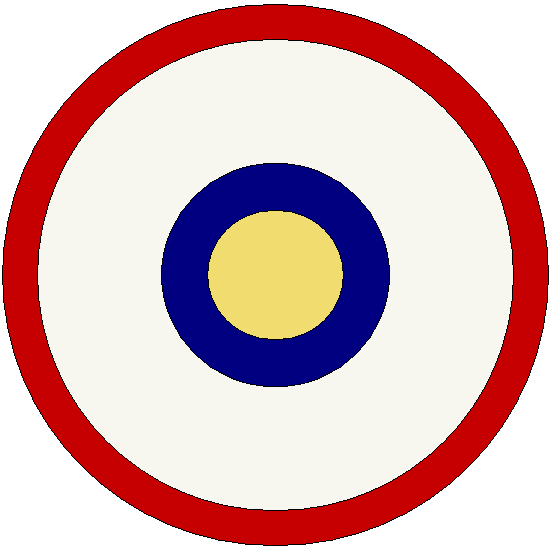Legio I Flavia Constantia on:
[Wikipedia]
[Google]
[Amazon]
 Legio I ''Flavia Constantia'' was a
Legio I ''Flavia Constantia'' was a
 Legio I ''Flavia Constantia'' was a
Legio I ''Flavia Constantia'' was a Roman legion
The Roman legion ( la, legiō, ) was the largest military unit of the Roman army, composed of 5,200 infantry and 300 equites (cavalry) in the period of the Roman Republic (509 BC–27 BC) and of 5,600 infantry and 200 auxilia in the period of ...
, mentioned in the ''Notitia Dignitatum
The ''Notitia Dignitatum'' (Latin for "The List of Offices") is a document of the late Roman Empire that details the administrative organization of the Western and the Eastern Roman Empire. It is unique as one of very few surviving documents of ...
'' as a comitatenses
The comitatenses and later the palatini were the units of the field armies of the late Roman Empire. They were the soldiers that replaced the legionaries, who had formed the backbone of the Roman military since the Marian reforms.
Organization ...
(field army) unit stationed in the Eastern Empire
The Byzantine Empire, also referred to as the Eastern Roman Empire or Byzantium, was the continuation of the Roman Empire primarily in its eastern provinces during Late Antiquity and the Middle Ages, when its capital city was Constantinopl ...
.
The name of the unit means "reliable Flavian legion". Jona Lendering
Jona Lendering (born 29 October 1964) is a Dutch historian and the author of books on antiquity, Dutch history and modern management. He has an MA in history from Leiden University and an MA in Mediterranean culture from the Amsterdam Free Uni ...
argues that this indicates it was founded in the reign of an emperor named Constantius of the Flavian dynasty
The Flavian dynasty ruled the Roman Empire between AD 69 and 96, encompassing the reigns of Vespasian (69–79), and his two sons Titus (79–81) and Domitian (81–96). The Flavians rose to power during the civil war of 69, known as ...
, and therefore must have been founded by Constantius II
Constantius II (Latin: ''Flavius Julius Constantius''; grc-gre, Κωνστάντιος; 7 August 317 – 3 November 361) was Roman emperor from 337 to 361. His reign saw constant warfare on the borders against the Sasanian Empire and Germani ...
(r. 337–361), the only ''Flavius Constantius'' that ruled the Eastern Empire. One alternative explanation is that it originated as a vexillatio
A ''vexillatio'' (plural ''vexillationes'') was a detachment of a Roman legion formed as a temporary task force created by the Roman army of the Principate. It was named from the standard carried by legionary detachments, the ''vexillum'' (plural ...
(detachment) of Legio I Flavia Gallicana Constantia, founded by Constantius Chlorus
Flavius Valerius Constantius "Chlorus" ( – 25 July 306), also called Constantius I, was Roman emperor from 305 to 306. He was one of the four original members of the Tetrarchy established by Diocletian, first serving as caesar from 293 t ...
and stationed in Armorica
Armorica or Aremorica (Gaulish: ; br, Arvorig, ) is the name given in ancient times to the part of Gaul between the Seine and the Loire that includes the Brittany Peninsula, extending inland to an indeterminate point and down the Atlantic Coast ...
in Gaul. Another is that it was originally called Legio IV ''Galeriana Thebeorum'', named after Galerius
Gaius Galerius Valerius Maximianus (; 258 – May 311) was Roman emperor from 305 to 311. During his reign he campaigned, aided by Diocletian, against the Sasanian Empire, sacking their capital Ctesiphon in 299. He also campaigned across the D ...
and renamed by his rivals after his death.
According to Ammianus Marcellinus
Ammianus Marcellinus (occasionally Anglicisation, anglicised as Ammian) (born , died 400) was a Roman soldier and historian who wrote the penultimate major historical account surviving from Ancient history, antiquity (preceding Procopius). His w ...
, ''Primus Flavia Constantia'' was stationed with Legio I ''Parthica'' in Singara
Singara (, ''tà Síngara'') was a strongly fortified post at the northern extremity of Mesopotamia, which for a while, as it appears from coins minted there, was occupied by the Romans as an advanced colony against the Persians. It was the camp o ...
until 360, when the city was conquered by Shapur II
Shapur II ( pal, 𐭱𐭧𐭯𐭥𐭧𐭥𐭩 ; New Persian: , ''Šāpur'', 309 – 379), also known as Shapur the Great, was the tenth Sasanian King of Kings (Shahanshah) of Iran. The longest-reigning monarch in Iranian history, he reigned fo ...
of the Sasanian Empire
The Sasanian () or Sassanid Empire, officially known as the Empire of Iranians (, ) and also referred to by historians as the Neo-Persian Empire, was the History of Iran, last Iranian empire before the early Muslim conquests of the 7th-8th cen ...
. The survivors of the siege were taken to Persia as prisoners.
See also
*List of Roman legions
This is a list of Roman legions, including key facts about each legion, primarily focusing on the Principate (early Empire, 27 BC – 284 AD) legions, for which there exists substantial literary, epigraphic and archaeological evidence.
When Au ...
References
See also
*Legio II Flavia Constantia
The Legio II ''Flavia Constantia'' (''reliable Flavian legion'') was a comitatensis Roman legion, created by Diocletian or Galerius, probably in the years 293, 296 or 297.
Since Roman strategy at the time required each province to have two legi ...
{{Roman Legion
01 Flavia Constantia
Comitatenses
Military units and formations established in the 4th century